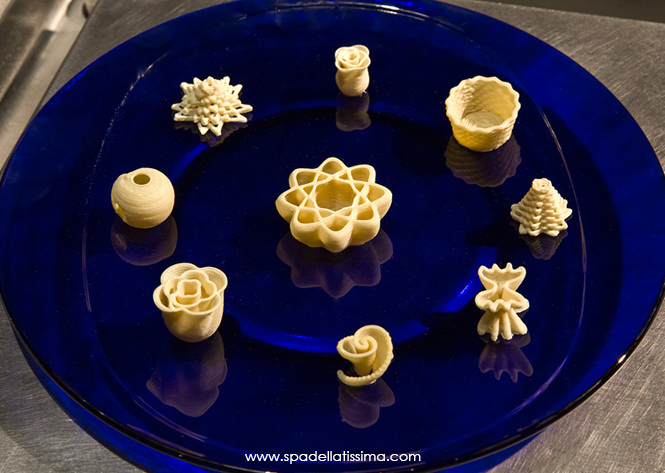![Barilla-Sponsored 3D Printed Pasta Competition [Source: Spadellatissima ]](https://fabbaloo.com/wp-content/uploads/2020/05/Pasta1_img_5eb0958d22135.jpg)
Charles Goulding and Preeti Sulibhavi of R&D Tax Savers discuss the culinary world of 3D printing pasta.
“Life is a Combination of Magic and Pasta”
Federico Fellini was a visionary. In today’s world, we have 3D printing and pasta. It might not be the magic and pasta that Federico Fellini was referring to, but 3D printing and pasta have proven to be a combination of ingredients for a technologically “magical” recipe.
Founded in 1877, family-owned and operated for four generations, Barilla has been busy making pasta relevant in today’s world. In fact, about five years ago Barilla created a fun competition for finding new shapes of pasta using 3D printing technologies. Entries for the Smart Pasta Competition, as it is called, must include a 3D printable design and brief explanation. Utilizing 3D printing technologies for pasta improves the design quality, texture and shapes of pasta. The thickness of the pasta walls also matters for optimal cooking.
Changing the Form and Substance of Pasta
While the form of pasta is changing utilizing 3D printing, the substance of the pasta, its ingredients, are changing as well. Recently, Barilla launched pasta made from red lentils. Since 2010, Barilla has also cut out the use of palm oil from all of its products as well as the use of sugar, salt and saturated fats. These developments were made to include the suggestions and the changing needs of Barilla’s customers.
![The Future: Innovative Pasta [Source: Desall ]](https://fabbaloo.com/wp-content/uploads/2020/05/Pasta2_img_5eb0958d82aee.png)
A Recipe for Future Success
This success of the Smart Pasta contest does not end with the winners of the contest. BluRhapsody, the pasta printing segment of Barilla’s Blu1877 group, is launching an e-commerce platform where customers can customize their pasta orders that are printed by Barilla-developed 3D pasta printers. Working with Michelin-star chefs, this e-commerce platform can create customized pasta for even the most avant-garde restaurants. The combination of pasta and 3D printing has whipped-up a sweet deal for both industries, which could also result in R&D tax credits.
![[Source: International Magazine for Pasta ]](https://fabbaloo.com/wp-content/uploads/2020/05/image-asset_img_5eb0958debf4a.png)
The Research & Development Tax Credit
Enacted in 1981, the now permanent Federal Research and Development (R&D) Tax Credit allows a credit that typically ranges from 4%-7% of eligible spending for new and improved products and processes. Qualified research must meet the following four criteria:
-
Must be technological in nature
-
Must be a component of the taxpayer’s business
-
Must represent R&D in the experimental sense and generally includes all such costs related to the development or improvement of a product or process
-
Must eliminate uncertainty through a process of experimentation that considers one or more alternatives
Eligible costs include U.S. employee wages, cost of supplies consumed in the R&D process, cost of pre-production testing, U.S. contract research expenses, and certain costs associated with developing a patent.
On December 18, 2015, President Obama signed the PATH Act, making the R&D Tax Credit permanent. Since 2016, the R&D credit has been used to offset Alternative Minimum Tax (AMT) for companies with revenue below $50MM and, startup businesses can obtain up to $250,000 per year in payroll tax cash rebates.











A Spanish company hopes to develop a specialized 3D printer that is capable of producing vegetarian steaks that both taste good and have great texture. But will you eat one?